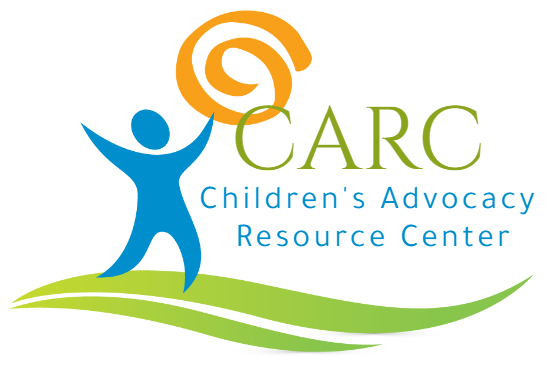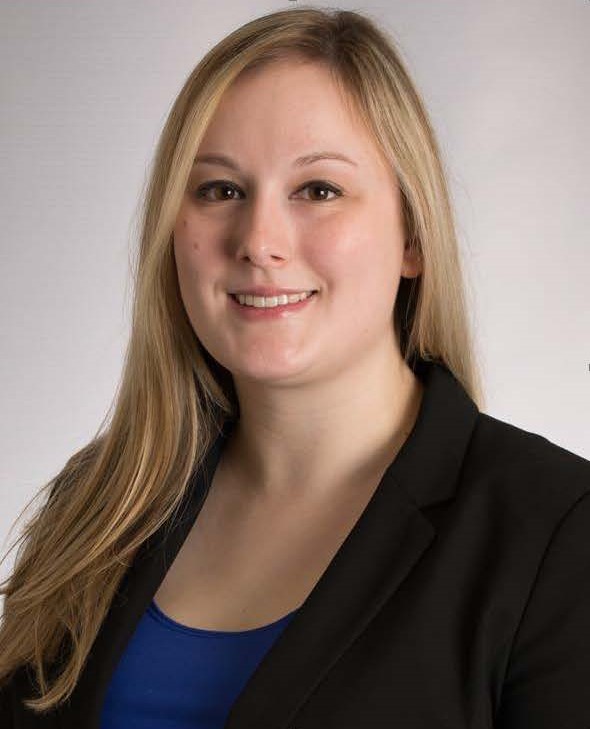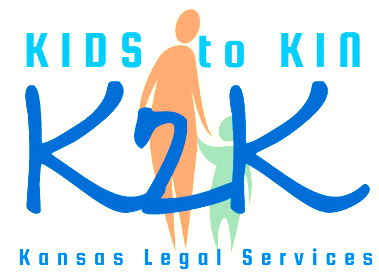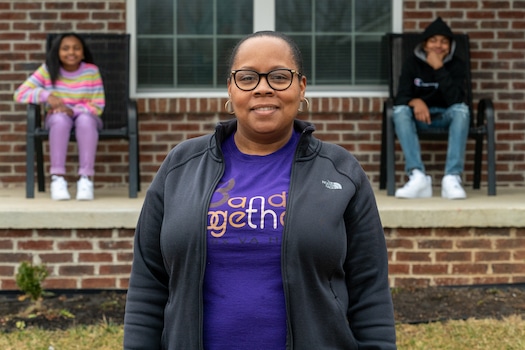CARC Newsletter Winter 2023

The Children’s Advocacy Resource Center (CARC) is a statewide program dedicated to providing legal advice or services to families caring for children in or at risk of entering the foster care system. CARC also provides resources for legal professionals who represent children or work as Guardians ad Litem.
CARC is funded through the Access to Justice grant through the Kansas Office of Judicial Administration.
Under the CARC program, Kansas Legal Services operates a Guardian ad Litem/foster care hotline that takes direct calls from foster families, foster youth, grandparents, community direct service providers, and others throughout Kansas in order to offer advice, representation, resource referral, or technical assistance on child welfare-related issues in Kansas.
It is our hope that this newsletter will help educate the Kansas legal community about changes in law within the state and expose the legal community to other resources in our community.
Please consider sharing this newsletter link with peers and colleagues who have an interest in child welfare and child legal representation.
Thank you for the work you do to improve the lives of children and youth throughout Kansas.
Please click on the + next to the article below you would like to access.
New Managing Attorney for Kansas Legal Services - Topeka

Please join KLS in welcoming Brynn Blair as the new Managing Attorney for the Topeka Kansas Legal Services office.
Brynn joined our office as a Staff Attorney shortly after graduating from law school in May 2018.
Brynn will celebrate five years with us this May. Other than domestic work, Brynn's current caseload consists primarily of Child in Need of Care cases, juvenile defense, guardianships and expungements.
COMMENTARY Medicating foster children: The attorney's role
Daniel Pollack, Lori Kornblum and Bruce Semon| January 26, 2023
Founder and President Emerita of the Children’s Defense Fund Marian Wright Edelman writes: “On any given day nearly one in four children in foster care is taking at least one psychotropic medication—more than four times the rate for all children. Nearly half of children living in residential treatment centers or group homes take psychotropic medications. Children in foster care are more likely to be prescribed multiple psychotropic medications at very high doses, although research shows higher doses can result in serious side effects.”
A number of states have passed legislation and rules requiring strict guidelines permitting dispensing psychotropic prescriptions to foster children. In a recent Missouri federal class action lawsuit, M.B. v Tidball, a settlement was reached. Significant reforms are summarized by Missourian staff writers:
Closer monitoring of children’s medical records and medication use, with a new requirement for follow-up appointments at three-month intervals for children taking a psychotropic drug.
Establishing informed consent policies that require prescribers and adults with input from children to weigh the risks and benefits of a medication before prescribing it.
Requiring a secondary review by a child psychiatrist of a recommended psychotropic medication prescription.
Training all foster care case managers and resource provider staff on appropriate use and potential side effects of psychotropic medications on children.
Florida provides in Rule 65C-35.007 [Authority to Provide Psychotropic Medications to Children in Out-of-Home Care]: …
(3) If the parents’ or guardians’ legal rights have been terminated, their identity or location is unknown, they decline to approve administration of psychotropic medication, or withdraw consent to the administration of psychotropic medication and any party to the dependency action believes that administration of the medication is in the best interest of the child and medically necessary, then authorization to treat with psychotropic medication shall be pursued as follows:
(a) The case manager shall consult with the prescribing physician or psychiatric nurse within one (1) business day of being notified that the parent:
1. Is unavailable,
2. Withdraws consent,
3. Declines to consent, or
4. Is found by the prescribing physician or psychiatric nurse to lack the ability to provide express and informed consent ….
(b) Within three (3) business days of receiving the Medical Report from the prescribing physician or psychiatric nurse, the child welfare professional must submit the Medical Report and any supporting documentation to Children’s Legal Services, with a request for legal action to obtain a court order authorizing the administration of the prescribed medication.
(c) Children’s Legal Services must file a motion seeking court authorization for the provision of the psychotropic medication. Except as provided in Section 39.407(3)(e), F.S., court authorization must occur before the psychotropic medication is administered to the child…
One of the items in the policy agenda of the National Association of Counsel for Children (NACC) is that the “rights of foster children should be protected as a matter of law. These rights include, but are not limited to … freedom from unnecessary and/or excessive medication.”
How do attorneys ensure this? How can individual attorneys best work with medical, social service, and education professionals toward this goal?
While attorneys are not expected to be experts on medications used in children, from a child psychiatry perspective, a few pieces of information are useful.
Stable homes are the most essential start of good care. Children in foster care do not experience this stability. They too often come from or have experienced abuse or neglect in their families, and sometimes in foster care as well. They may have had many placements and have suffered other types of trauma. Children who have been abused or neglected do not respond as well to medications, even when the medications are properly selected. Regrettably, they often end up with long lists of medications.
How do children end up on large amounts of medications? Many times, the children’s behavior is out of control. The response is to hospitalize them when the foster parents become overwhelmed. The hospital’s incentive is to stabilize these children as quickly as possible in order to discharge them.
This approach unfortunately means throwing a lot of medications at children quickly. Then, the children calm down and can be discharged. But, the side effects of the medication may not appear until after discharge, and may be very difficult to sort out by a follow-up outpatient provider. By the time the child is seen for follow-up—which may be weeks later—possibly one or more medications out of several may be helping. The child may be a little more stable, so the foster parents “do not want to rock the boat” by eliminating some medications to see which one actually is working.
Yet, the child may be experiencing side effects, which unfortunately may cause the child to act out again, leading to more hospitalization and even more medications. As a child psychiatrist, I (B.S.) have seen the results of this cycle play out repeatedly. Although medications are for psychiatric use, they have side effects ranging from headaches to irritability and everything in between, which can cause behavioral problems in children. The child may complain that they don’t feel well, and frequently the adults do not take the child seriously.
When the child acts out behaviorally, this is treated as yet another behavioral problem, which may lead to adding or increasing medications. Often, the perceived solution to a medication not working is to increase the dose, which in reality may do nothing, or cause more side effects. Sorting out which medications work and which ones don’t, and which problems are caused by side effects, is very difficult. The problem is made even more difficult when the child is brought to the outpatient psychiatrist by someone who may be a case manager or a new foster parent, or who has no long-term history with the child and does not have medical records.
These kinds of histories make the life of the attorney watching out for the best interests of children very difficult. To go through all the psychiatric medications used for children is beyond the scope of this paper. Nonetheless, a few things can be said. The academicians like to say there is evidence antidepressants such as sertraline (Zoloft) are helpful for anxiety in children. The evidence here is modest. However, with abused children, we are not talking about simple anxiety. These children can have a family history of bipolar disorder as well.
Antidepressants can make anyone with a tendency to bipolar worse. This is especially true for children and adolescents. The side effects of antidepressants in children can present as greater irritability, which is actually a symptom of bipolar disorder, again leading to hospitalization and more medications. In my (B.S.) experience, children with a history of abuse or neglect do not respond well to sertraline.
Another medication that is commonly given to children is escitalopram (Lexapro), which has the same problems as sertraline. These are the two most common medications that destabilize the moods of children.
Although we have highlighted some side effects of medication that are harmful, we should keep in mind that many medications are very helpful. Some of the most helpful medications are the older medications for ADHD (attention deficit hyperactivity disorder). Children tend to do much better at home and in school with stimulant drugs such as methylphenidate (Ritalin).
Attorneys may encounter parents who are resistant to children being medicated. Those parents often are viewed as uncooperative, especially when their child is in foster care. Generally, the parent has the final right of approval or disapproval of medications. Attorneys are not expected to be psychiatrists, but they should understand that when parents and foster parents complain about long lists of medications, and perceive that the medications are making their children worse, these adults may very well be right.
Attorneys who are guardians ad litem should take these complaints seriously, and, as part of their investigation, talk directly with the
prescribing doctor to understand the child’s medications and the parent’s hesitancy. Why? Because a parent’s hesitancy may be viewed negatively by the courts and may result in a loss of custody, which may be contrary to the child’s best interests.
The prescribing doctor may not know the child’s and family’s entire history, and the attorney can gain information as well to help in evaluating the case. On the other hand, biological and foster parents and children may feel that they need to comply with the medication prescribed, and tell the doctor that the medication is working, when it is not, or is causing problems. The doctor then has a much harder time figuring out whether the medication works.
Attorneys looking out for children may feel limited in what they can do, but they should try to know which psychiatric providers in their area work to keep children on lower dosages of appropriate medications and stay away from medications which are not helpful. If children are on long lists of medications, the caregivers should discuss the medications thoroughly with the prescriber to make sure that the medications do not conflict with each other, or that one medication is not causing side effects that are being treated by another medication.
As always, communication is key.
Daniel Pollack, MSW, JD is a professor at the School of Social Work, Yeshiva University, New York City. He has been retained as an expert witness in more than 30 states on many child welfare issues. He was a Commissioner of Game Over: Commission to Protect Youth Athletes, an independent blue-ribbon commission created to examine the institutional responses to sexual grooming and abuse by former USA Gymnastics physician Larry Nassar. Contact: dpollack@yu.edu .
Lori S. Kornblum served as a Judge on the Wisconsin Court of Appeals. She is an Adjunct Professor at Northeastern University School of Law and Marquette University Law School, and a full time Instructor at Milwaukee Area Technical College. Her private practice focuses on work as a guardian ad litem for children and vulnerable adults, foster care issues and disability services. Contact: lorikornblum.law@gmail.com
Bruce Semon, M.D., Ph.D., is a board-certified adult, child and adolescent psychiatrist practicing in Milwaukee, Wisconsin. He is licensed to practice in Wisconsin, California, New York and Texas. Contact: www.nutritioninstitute.com.
The youth mental health crisis is hitting girls the hardest. Here’s what needs to change.
Guest Opinion Essay from Youth Today
By April Brownlee February 14, 2023

These days, I often think about one particular girl, a bright eyed 18-year-old from Florida’s Palm Beach County who had a difficult childhood. Growing up, she witnessed and experienced substance, emotional, and physical abuse. To cope with this trauma, she started using drugs at 12. But the pain she felt only got worse, and by the time she was entering high school, she had attempted suicide and had been sent to a psychiatric hospital seven times.
I wish I could tell you that her story is unique – but it’s not. Four in ten of the girls and young women I work with experience suicidal ideation and the majority struggle with depression, anxiety and other mental health issues.
This mental health crisis has only gotten worse as a result of the COVID-19 pandemic. In 2019, 31% of girls at Pace Center for Girls, a network of academic and social service programs for girls and young women who experience trauma, reported suicidal ideation. Today that number is 43%.
This isn’t unique to Pace: across our country, more young people are struggling. But the burden of the crisis is not equally distributed across boys and girls. High school girls reported declining mental health and reduction of usual activities at more than double the rate of boys during the COVID-19 pandemic. And while emergency room visits for suspected suicide attempts increased in 2020, it rose by more than 50 percent for adolescent girls and only four percent for boys.
There are several reasons for this dramatic increase in mental health challenges. School shutdowns at the beginning of the pandemic left students feeling isolated at a time of a national crisis and many simply haven’t recovered. Young people often reach for social media in hopes of connecting with peers but leave feeling worse about themselves, an effect that is especially pronounced among teen girls.
The pandemic’s economic challenges have also had devastating impacts on families, especially those already struggling to make ends meet. That puts a heavy burden on girls, who even prior to COVID spent more time on household tasks than boys, to help out by taking on part-time work, cooking or taking care of younger siblings.
As a result, many students are simply dropping out of school, leaving them even more isolated. During the 2020–22 school year, more than 1 million students were “unaccounted for” nationally.
These statistics are harrowing, but it is proven that prevention and intervention measures can change these outcomes.
The girls and young women I work with receive academic instruction and work closely with counselors trained in trauma-based therapy and suicide screening. Through this we see real change, with 9 out of 10 girls improving academically in school or employed one year after completing the program.
These results show the importance of prioritizing interventions addressing girls’ mental health challenges head-on. Too often, however, schools lack the resources needed to do this.
School counselors play a crucial role in screening for mental health challenges, but many schools simply do not have enough counselors on staff.
Lawmakers, both at the state and national level, need to prioritize providing schools with continuous and consistent funding to ensure they can do so. And schools need to ensure that counselors are trained in gender-responsive care and the unique ways in which the mental health crisis affects girls and young women.
We also need to raise awareness about services available to young people, such as the National Suicide and Crisis Lifeline. Since the hotline switched its number to 988 six months ago, it has seen a record number of calls, highlighting the high demand and importance of raising awareness about this service.
I am currently working with a girl-led task force to create campaigns to raise awareness of the hotline and other free services available in our community. Girls tell me that we need to meet them where they are, which includes social media platforms like Instagram, TikTok and BeReal. More efforts, informed by the experiences of our young people, should be rolled out in communities across the country.
With these dedicated investments, we can start building a better future for young people.
As for that bright-eyed 18-year-old who has survived so much trauma, she has found new ways of coping. Today she is actively involved in her community, was recently awarded a college scholarship and dreams of one day being a real estate agent.
“I am excited about my future. That’s something I never thought was possible,” she says.
***
April Brownlee is the senior director of program performance and innovation at Pace Center for Girls, supporting continued development of gender responsive programming initiatives to support at-promise girls. She is a licensed mental health counselor and the current co-chair of the Girls Coordinating Council of Palm Beach County, a community collaborative focusing on reforming and strengthening the system of care for girls.
“I will commit to this child as much as I can for the time that they are with me:”
A qualitative examination of how foster carer commitment relates to short-term foster care for young children following abuse and neglect
Fiona Turner, Gary Kainth, Sara MacDonald, Rory O'Connor, Karen Crawford, Helen Minnis
From Child Abuse & Neglect 135 (2023)
A B S T R A C T
Background: Foster carer commitment to the child has been shown to be of paramount importance in young children's recovery and development following abuse and neglect. In Dozier's definition of commitment in the US, there is a focus on both emotional investment in the child and committing to an enduring relationship with the child. How this relates to the routine practice of short-term, temporary, foster care has not been studied.
Objective: This is the first qualitative study to explore the drivers of, and barriers to, commitment in short-term foster care within the broader aim of examining whether short-term care is meeting the needs of maltreated young children.
Participants & setting: Fourteen foster carers took part in research interviews and five focus groups were conducted with infant mental health professionals.
Methods: Interviews and focus group data were subject to qualitative thematic analysis in order to identify patterns of commonality in relation to our research questions.
Results: Three broad themes pertain to commitment and the meeting of young children's needs in short-term foster care: Influence, Timescales and Choice in the fostering role. These themes were found to house both drivers of, and barriers to, commitment in short-term care, which are influenced by systemic normalizations of fostering practices.
Conclusions: The emotional investment facet of commitment is more alive in the ‘psyche’ of short-term foster care than commitment to an enduring relationship. A long-term outlook for the child may be an undefined facet of commitment that is more akin with short-term placements.
$20 million awarded to Kansas programs focused on keeping families together
Around $20 million has been awarded to organizations in Kansas for programs that are meant to keep families together and children out of foster care.
Kansas Legal Services was awarded $324,158 for its Kinship Navigation Program, Kids2Kin.

Kansas Legal Services was also awarded funding of $1,094,577 for a new project, Parent Advocates Program. This program is considered a Primary Prevention Program.
Kansas Governor Laura Kelly announced on Tuesday, Feb. 14, that to reinforce her commitment to children and families in the Sunflower State, a new set of Family First Prevention Grants which total nearly $20 million have been awarded. These grants will create and help programs grow that are meant to keep families together and prevent children from entering foster care.
Gov. Kelly noted that current Family First Prevention programs have proven successful and have helped more than 3,000 children in Kansas remain with their families and stay out of foster care.
“Family First programs have been proven to keep families together, improving outcomes for our children long-term and saving our state money down the road. They have contributed to the nearly 20% drop in the total number of children in foster care since the start of my administration,” Kelly said. “That’s why we have worked across the aisle to direct both state and federal funding to expanding these successful programs.”
In 2019, Kelly said Kansas became one of the first states to implement the Family First Prevention Services Act, bipartisan federal legislation that allows states to direct federal foster care money to prevention programs meant to keep families together. The governor praised the legislature for its support and cooperation to create such legislation.
“None of this would have been possible without the bipartisan support of the legislature, which recognized the importance of the Family First Prevention Services Act,” said Governor Kelly. “By working across the aisle, we passed a budget that increased funding for Family First by more than five million dollars, so that we can draw down even more federal funding.”
The Governor indicated that the Kansas Department of Children and Families has used these funds to treat mental health, build parent skills, prevent substance use and aid family members who serve as primary caregivers.
“I couldn’t be prouder of the work DCF and our partner agencies have done on behalf of Kansas families,” said DCF Secretary Laura Howard. “We know that Family First programs are a primary factor in the overall reduction in foster children in Kansas, with nearly 90% of children who received the services remaining at home with their families without the need for foster care.”
Kelly said the new grants expand the number of providers from 11 to 14 and the Multisystemic Therapy system statewide. They will also fund new substance use disorder services and parent-skill-building partners as well as include new primary prevention programs.
The Governor said the following organizations have been awarded funds:
- Substance Use Prevention
| Agency | Evidence-Based Program | Award |
|---|---|---|
| DCCCA | Substance Treatment and Recovery Teams | $921,606 |
| Kansas Children’s Service League | Parent-Child Assistance Program | $310,344.98 |
| KVC | Strengthening Families | $200,000 |
| Saint Francis Ministries | Seeking Safety | $700,0 |
| Agency | Evidence-Based Program | Award |
|---|---|---|
| Child Advocacy and Parenting Services, Inc. | Family Mentoring | $414,353.92 |
| Great Circle | Healthy Families America | $395,475 |
| Kansas Children’s Service League | Healthy Families America | $1,555,000 |
| Foster Adopt Connect | Fostering Prevention | $543,134 |
| Kansas Parents as Teachers Association | Parents as Teachers Bright Futures Program | $1,000,000 |
| Saint Francis Ministries | Family-Centered Treatment | $4,798,000 |
- Mental Health
| Agency | Evidence-Based Program | Award |
|---|---|---|
| Community Solutions, Inc. | Multisystemic Therapy | $6,409,472 |
| TFI Family Services | Parent-Child Interaction Therapy | $1,150,000 |
- Kinship Navigation
| Agency | Evidence-Based Program | Award |
|---|---|---|
| Kansas Legal Services | Kids 2 Kin | $324,158 |
- Primary Prevention Programs
| Agency | Evidence-Based Program | Award |
|---|---|---|
| Kansas Legal Services | Parent Advocate Program | $1,094,577 |
| Sedgwick Co. Sheriff’s Office | Community Support Specialist |
We’re Building a New Path to Prioritize Kin
BY GUEST WRITER 3/7/2023 from The Imprint: Youth and Family News
Kinship care provides a familiar face and a stable environment for children whose parents are unable to do so. Becoming a kinship caregiver is a selfless, life-changing decision. Across the country, thousands of children are in need of the chance to be raised by the people who know and love them. These supporters should be eligible for much-needed assistance from child welfare systems.
In communities that allow unlicensed placements, kin can safely care for children for years, yet may be ineligible for support and guardianship assistance based on current law and regulations. It does not have to be this way to ensure child safety. And the government just took a major step to help states leave their old ways behind and focus on prioritizing kin.

Natasha King, 46, and her two grandchildren. Photo: J. Tyler Franklin/WFPL
A new draft rule proposes allowing Title IV-E child welfare systems to create a kin-specific process for licensing or approving kin. If it’s finalized, systems will be able to create new, tailored processes to ensure children can safely be raised by people who know and love them and who have the support they need to safely do so.
With this new flexibility comes the opportunity to create new, kin-specific licensing recommendations. Our collective organizations are pleased to announce that the work to develop these new recommendations is underway, and we need your help to ensure they are clear, concise, and relevant.
States already must develop licensing standards that are “reasonably in accord with recommended standards of national organizations concerned with standards for [foster family] homes, including standards related to admission policies, safety, sanitation, and protection of civil rights.” If this regulatory change is approved, state and tribal child welfare agencies can choose to develop a kin-specific process as long as it is in line with that overarching expectation.
To date, there are two sets of national standards for licensing all foster parents (kin and non-kin): the National Association for Regulatory Administration (NARA) model and the National Model Foster Family Home Licensing Standards, which relied heavily on NARA and were published by the U.S. Administration on Children and Families in 2019. These standards serve as a model for both kin and non-kin licensing, as required by current regulation.
The new proposed rule recognizes that the use of one set of standards for both kin and non-kin foster home applicants alike often fails to respond to the unique context of kin. Instead, it places unnecessary burdens that prevent children from being raised by members of their own community.
Many caregivers living in apartment buildings or mobile homes, for example, cannot pass requirements that were never designed with them in mind. In states where licensure is required for placement, children who could be living with loving, able and willing kin are instead living in institutions or outside of their families, often for reasons that have nothing to do with safety. These children could be in homes with family, filled with love, but because their kin homes have bunk beds or the “wrong” number of points of egress, they must live elsewhere.
The goal of these recommended standards is to ensure that children are safe and that the kin who are best suited to provide children with loving homes have the opportunity to do so, thereby enabling greater permanency and well-being for more children and families. This flexibility will expand the pool of eligible kinship caregivers by removing the racial and socioeconomic biases endemic in many licensing processes today and ensure children with kin in foster care have the support and services they need, just like children with non-kin have.
We will be co-designing these recommended standards with a diverse array of kinship caregivers and parents from around the country and are also seeking input from states, tribal partners, licensing regulatory administrators and child welfare workers. As a first step, we’ll be conducting two nationwide research projects on the topics of background checks and safety assessments.
Additionally, we will study current state and tribal emergency and provisional licensing processes. It is our goal to learn about what’s working well in these processes today — as well as the challenges kinship caregivers, agency workers, and others are experiencing — in order to propose a process and standards that efficiently and safely meet the needs of all families. We also want to ensure that any recommendations work for our full array of kinship caregivers, living in apartments, longhouses, farms and other environments that may not always fit neatly in a checkbox on today’s forms.
The recommended standards will be designed for state agencies licensing kinship caregivers. They will not be designed specifically for tribal nations that license kinship caregivers. We recognize the great diversity in Indian Country with 574 federally-recognized tribal nations and the sovereign authority of tribal nations to develop their own licensing standards.
These standards are being developed by a group of national organizations including A Second Chance Inc., American Bar Association Center on Children and the Law, Children’s Rights, CWPolicy, Generations United, National Association for Regulatory Administration, New America’s Resource Family Working Group, National Indian Child Welfare Association, and Think of Us.
To date, we have had informal conversations with more than 25 states since the draft rule was published, and the enthusiasm for this new flexibility is palpable. We hope to touch base with every child welfare agency in the coming days, and encourage interested states and tribes to reach out to us to provide input into these new standards. We believe states and tribes will benefit from participating in this co-design process, whether or not they eventually choose to adopt the new standards after new flexibility is allowed.
If you are interested in this work, click here to learn more.
This proposed rule is a golden opportunity to ensure that every child has the opportunity to be cared for by the people who know and love them with the same monthly support as all children with non-kin receive. It’s a chance to align our practices with our values and a key step in becoming a true kin-first culture. We hope you’ll join us.
Dr. Sharon McDaniel, Founder and CEO, A Second Chance, Inc.
Sandy Santana, Executive Director, Children’s Rights
Rob Geen, Founder, CWPolicy
Donna Butts, Executive Director, Generations United
Jim Murphy, CEO, National Association for Regulatory Administration
Sarah Kastelic, Executive Director, National Indian Child Welfare Association
Sixto Cancel, Founder and CEO of Think of Us
Marina Nitze, Fellow, New America’s Resource Family Working Group
Note: Dr. Sharon McDaniel is a member of the board of directors for The Imprint’s parent organization, Fostering Media Connections. She had no involvement with our decision to publish this op-ed, per our editorial independence policy.



